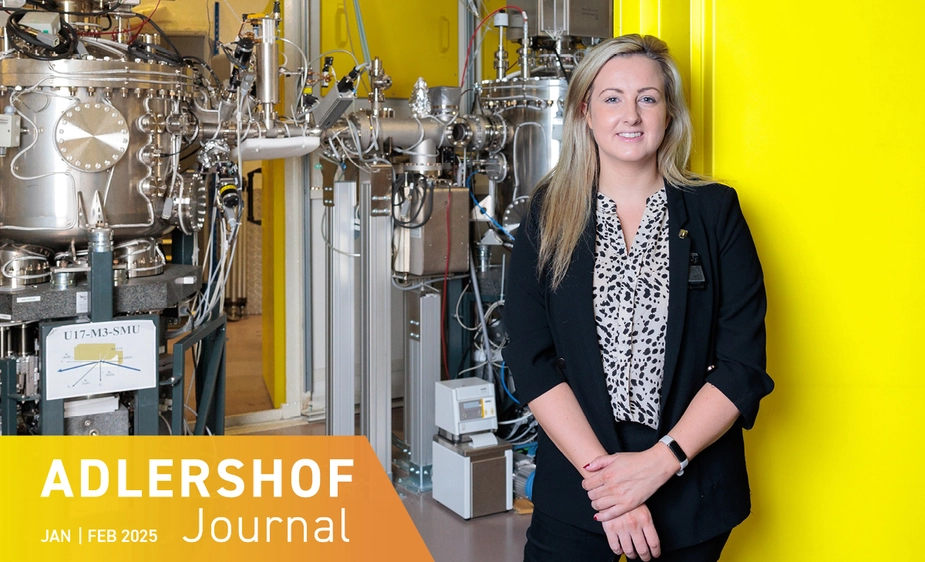The molecule splitter
Michelle Brown is working on producing green hydrogen

Splitting water—using electrical energy to break the H₂O molecule into its gaseous components, hydrogen and oxygen, to be exact. Could this process be made cheaper, simpler, and more efficient? This question has guided Michelle Browne’s career, taking her from her native Dublin through Belfast and Prague to Adlershof.
Much depends on her research. It is one of the things set to determine whether the global effort against climate change will be successful. Produced using renewable electricity, green hydrogen is heralded as a key energy carrier for a carbon-neutral future. On the path to industrial-scale production of this climate-friendly gas, Browne’s award-winning research has taken major steps forward.
In 2021, she developed a hydrogen generator using a 3D printer and shared the blueprint online, making it accessible to researchers in labs all over the globe. According to Browne, the device costs just 500 euros to produce—a fraction of the market price, which can reach up to 20,000 euros for conventional equipment. Browne has now been leading a team of young scientists at Helmholtz Centre Berlin for Materials and Energy (HZB) since 2022.
Her team focuses on the electrodes that supply current during water splitting, particularly the anode, where the separated oxygen is produced. One research question is how to reduce the significant energy input currently required for this process. Browne’s group experiments with novel materials, applying them as ultra-thin coatings to electrodes to enhance their efficiency. ‘They do the research,’ Browne says about her team. Her role is to oversee the bigger picture—finances, public relations, and project management.
Browne’s journey to her life’s work was not straightforward. At one point, she worked as a physiotherapist, before delving into chemical methods for forensic science during her studies. It wasn’t until her dissertation that she chose a topic from electrochemistry. All this was driven by her curiosity to understand the world through science. And her desire to share that understanding with others. As a young doctoral candidate, she developed a groundbreaking science curriculum for children aged four to twelve in Ireland. Later, she designed an introductory course on electrochemistry for high school students aged 12–18.
After earning her PhD in Dublin, Browne embarked on a nomadic scientific journey, always seeking out the state of the art in hydrogen production. She spent two years at the prestigious Trinity College Dublin before facing a pivotal decision: What next? Browne turned down an offer from the venerable Royal Society, choosing instead to move to Adlershof. To her, Germany is nothing short of a ‘promised land’ of environmental research: ‘The expertise, funding, and infrastructure here are far superior to anywhere else.’
The now 34-year-old Irish scientist and her three-year-old daughter have found a home in Berlin. Browne has integrated well with her colleagues at Adlershof—who she notes are ‘very good at organising events’—while her daughter thrives in a kindergarten in Charlottenburg. Funding for her research from the Helmholtz Association extends until 2027. And after that? Michelle Browne has a dream: a professorship in Germany. She hopes to stay.
Dr. Winfried Dolderer for Adlershof Journal
Website of the HZB junior research group ‘Electrocatalysis: Synthesis to Devices’